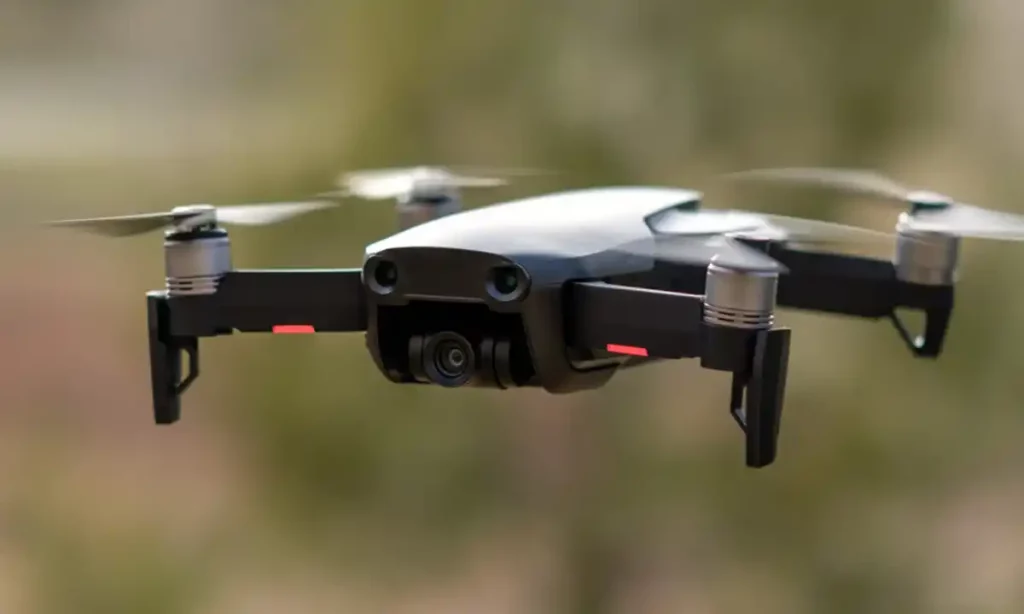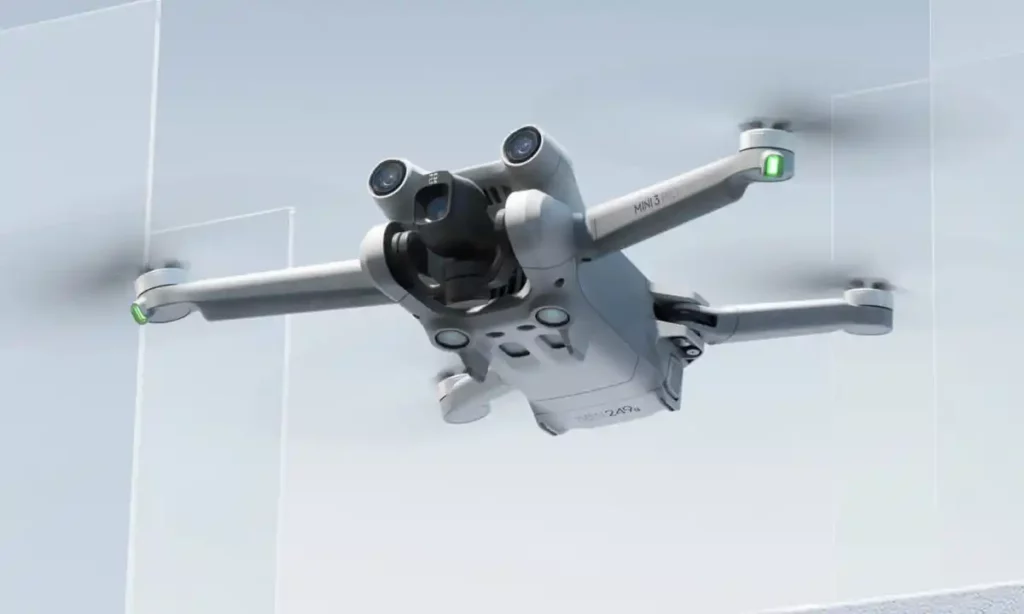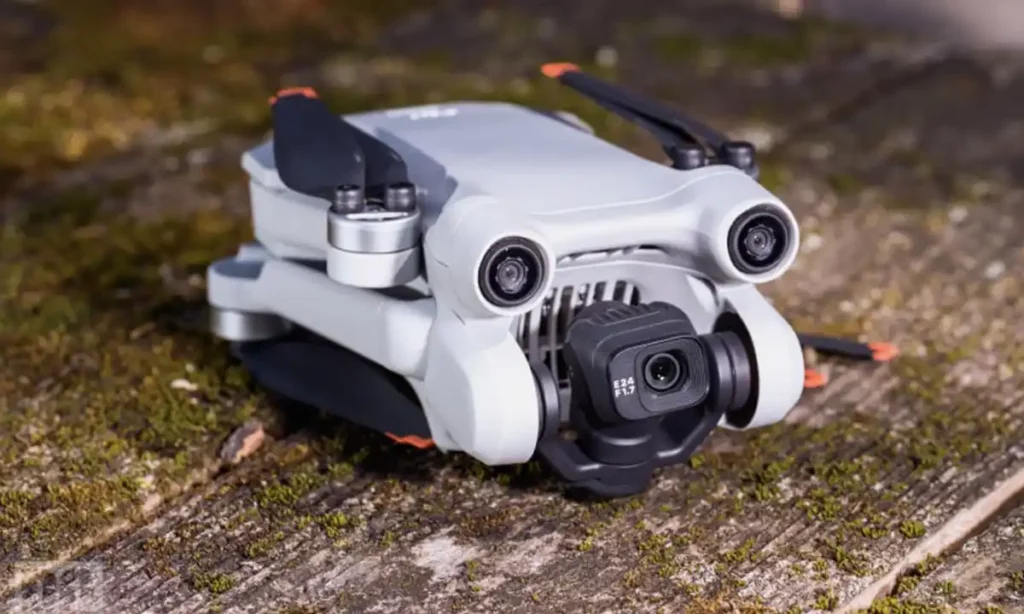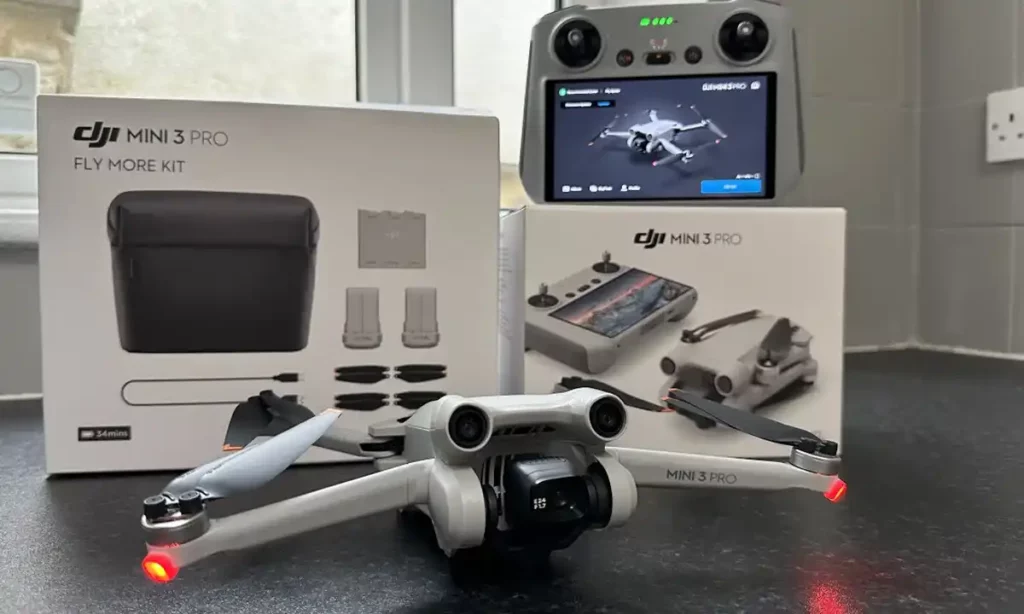Dronelost.com – Are you ready to take your aerial photography and videography skills to new heights? Just as the sun begins to set on the horizon, you launch your trusty drone into the sky, ready to capture breathtaking footage. But which drone should you choose to accompany you on this exhilarating adventure – the DJI Mini 3 Pro or the Mavic Air?
Here’s a mind-boggling fact: the DJI Mini 3 Pro and the Mavic Air are two of the most popular drones on the market today, each packing a punch with their unique features and capabilities. These portable wonders are revolutionizing the way we capture life’s most unforgettable moments from dizzying heights.
But how do they stack up against each other? Which one deserves a spot in your gadget collection? Whether you’re an aspiring content creator, an adrenaline junkie seeking adrenaline-infused shots, or a traveler with a never-ending wanderlust, choosing the right drone can make all the difference in the world.
With so much at stake, the decision between these two drones is no easy feat. But fear not, as we navigate through the intricacies of the DJI Mini 3 Pro and the Mavic Air, you’ll gain a deeper understanding of their distinct strengths and weaknesses.
So, buckle up and prepare to embark on a thrilling journey as we delve into the exciting world of the DJI Mini 3 Pro and the Mavic Air. Get ready to unleash your creativity and revolutionize the way you capture those extraordinary moments that deserve to be immortalized in timeless footage.
DJI Mini 3 Pro vs Mavic Air Specifications

When comparing the DJI Mini 3 Pro and the Mavic Air drones, it’s important to delve into their technical specifications to understand the capabilities of each model.
DJI Mini 3 Pro
The DJI Mini 3 Pro comes equipped with a 1/2.3-inch sensor, which allows for the capture of stunning 12-megapixel still photos and the ability to record videos up to 4K resolution at 30 frames per second. This sensor ensures exceptional image quality, bringing out vibrant colors and sharp details in every shot. Whether you are capturing breathtaking landscapes or action-packed moments, the Mini 3 Pro delivers impressive results.
In terms of flight performance, the Mini 3 Pro stands out with its maximum flight time of 31 minutes. This extended flight time allows users to explore their surroundings and capture footage without worrying about battery life. Additionally, the Mini 3 Pro offers a maximum transmission range of 10 kilometers, ensuring a stable and reliable connection between the drone and the remote controller.
Mavic Air
The Mavic Air, on the other hand, also features a 1/2.3-inch sensor, but it takes imaging capabilities to the next level. With an impressive 48-megapixel still photo resolution, the Mavic Air allows users to capture highly detailed images with stunning clarity. It can also shoot 4K videos at an impressive 60 frames per second, providing smooth and cinematic footage that truly stands out.
While the Mini 3 Pro outperforms the Mavic Air in terms of flight time, with a maximum of 31 minutes, the Mavic Air compensates for this with an extended transmission range of 18 kilometers. This range allows the Mavic Air to cover larger areas and explore more expansive landscapes, making it an ideal choice for aerial photographers and videographers looking to capture wide-angle shots or cover vast distances.
Both drones are packed with advanced features and intelligent flight modes. They offer obstacle avoidance systems, ensuring a safe flying experience, and various shooting modes to unleash creativity. Additionally, they come equipped with GPS and GLONASS positioning systems, enabling precise and steady flight performance. These features enhance the overall user experience and make capturing stunning aerial footage a breeze.
DJI Mini 3 Pro vs Mavic Air Flight Performance

When it comes to flight performance, the DJI Mini 3 Pro and the Mavic Air offer different features that cater to users with varying levels of experience and needs.
DJI Mini 3 Pro
The DJI Mini 3 Pro is an excellent choice for beginners and casual flyers due to its stable flight performance and user-friendly controls. Designed to be easy to fly, it provides a smooth and enjoyable flight experience.
With a maximum speed of 16 meters per second, the Mini 3 Pro offers a decent level of agility. It allows users to effortlessly navigate through the skies and capture stunning aerial footage. The drone can withstand winds of up to 38.5 kilometers per hour, ensuring you can fly confidently even in slightly challenging weather conditions.
One of the notable features of the Mini 3 Pro is its support for automated flight modes, such as QuickShots. These intelligent flight modes enable users to capture professional-looking aerial shots with ease. Whether it’s a rocket-style ascent or a majestic circle around a subject, the Mini 3 Pro can execute these shots effortlessly. It’s a great feature for those who want to add creativity to their aerial photography or videography.
Mavic Air
The Mavic Air, on the other hand, offers enhanced flight performance, making it suitable for more advanced users. This drone takes things up a notch with its impressive speed and advanced flight modes.
With a maximum speed of 19 meters per second, the Mavic Air is faster than the Mini 3 Pro. It can swiftly navigate through the air, allowing users to capture fast-paced action or cover larger distances in a shorter amount of time. Additionally, it can handle winds of up to 38.5 kilometers per hour, ensuring stable flight even in slightly windy conditions.
One of the standout features of the Mavic Air is its ActiveTrack mode. This intelligent flight mode enables the drone to autonomously follow and track a subject, greatly simplifying the process of capturing moving targets. Whether you’re filming a sports activity or capturing the movements of wildlife, ActiveTrack ensures you can focus on the subject while the drone takes care of the flying.
In addition to ActiveTrack, the Mavic Air also offers other advanced flight modes, including SmartCapture, QuickShots, and TapFly. These features provide users with more flexibility and possibilities for creative aerial shots.
Compactness and Portability

When it comes to compactness and portability, both the DJI Mini 3 Pro and the Mavic Air offer impressive features that make them easy to transport and convenient to use on the go.
DJI Mini 3 Pro
The DJI Mini 3 Pro takes the concept of portability to a whole new level. It is specifically designed to be lightweight, weighing in at only 249 grams. This makes it incredibly easy to handle and ensures that it meets the regulations and restrictions of various countries. Whether you are traveling internationally or planning to explore your local surroundings, the Mini 3 Pro offers the perfect balance between functionality and size.
Moreover, the Mini 3 Pro’s foldable design further enhances its portability. You can easily fold it up and store it in a small backpack or even a jacket pocket. This not only saves space but also provides you with the flexibility to carry it with you wherever you go. Whether you are hiking in the mountains or strolling through a bustling city, the Mini 3 Pro is ready to capture those awe-inspiring moments.
Mavic Air
The Mavic Air, although slightly bulkier than the Mini 3 Pro, still retains a relatively compact form factor. Weighing around 570 grams, it offers a more substantial feel without compromising on portability. Despite its compact size, the Mavic Air exudes a sense of sturdiness that ensures a smooth and stable flight, even in windy conditions.
Transporting the Mavic Air is made incredibly convenient with its dedicated carrying case. This case is designed to provide optimal protection and easy portability. You can effortlessly transport the Mavic Air to your desired location, whether it’s a remote hiking trail or an exotic beach, knowing that it is safely stored and ready for your next adventure.
While the Mini 3 Pro takes the crown for being the lighter and more compact option, the Mavic Air offers a perfect balance between portability and durability, making it an excellent choice for those who value a slightly larger yet still highly portable drone.
Camera Features

When it comes to camera features, both the DJI Mini 3 Pro and the Mavic Air offer impressive capabilities. Let’s take a closer look at what each drone has to offer in terms of photography and videography.
DJI Mini 3 Pro
The DJI Mini 3 Pro is equipped with a range of intelligent photography modes that make capturing professional-looking shots a breeze. One notable feature is QuickShots, which allows users to easily capture cinematic shots with just a few taps on their device. This feature is perfect for beginners or those looking to capture stunning footage without needing extensive piloting skills.
Another key feature of the DJI Mini 3 Pro is its 3-axis gimbal. This gimbal ensures stable and smooth footage, even in challenging flying conditions. Whether you’re capturing fast-paced action scenes or shooting in windy environments, the DJI Mini 3 Pro’s gimbal will help you achieve professional-grade results.
In addition to its intelligent photography modes and gimbal stabilization, the DJI Mini 3 Pro offers enhanced photo modes such as AEB (Auto Exposure Bracketing) and Panorama. AEB allows you to capture multiple shots with different exposure settings, which can then be merged together for a perfectly balanced final image. The Panorama mode, on the other hand, enables you to capture breathtaking wide-angle shots of landscapes or cityscapes.
Mavic Air
The Mavic Air takes camera capabilities to the next level with its advanced features. One standout feature is HDR (High Dynamic Range), which enhances the image quality by providing a wider range of color and detail in both highlights and shadows. With HDR, your photos will have a more vibrant and lifelike appearance.
Another exciting feature of the Mavic Air is Hyperlapse. This feature allows you to create stunning time-lapse videos with ease. Whether you want to capture the setting sun or the hustle and bustle of a busy city, Hyperlapse will add a captivating element to your footage.
Similar to the DJI Mini 3 Pro, the Mavic Air also utilizes a 3-axis gimbal for stable footage. This ensures that your videos stay smooth and free from unwanted shakes or vibrations. Whether you’re shooting while in motion or in turbulent flying conditions, the Mavic Air’s gimbal will keep your footage steady.
Additionally, the Mavic Air offers SmartCapture, a feature that allows for hands-free control. By simply using gestures, you can command the drone to take off, land, or even capture selfies. This intuitive feature is particularly useful when you want to capture group photos or unique perspectives without needing a dedicated remote controller.
Price and Value for Money

When it comes to comparing the DJI Mini 3 Pro and the Mavic Air, one crucial factor that often plays a significant role in decision-making is the price. Both drones offer unique features and capabilities, but their price points differ, making each suitable for a specific user base. In this section, we will delve into the price and value for money offered by these two popular drones.
DJI Mini 3 Pro
The DJI Mini 3 Pro stands out for its affordability, making it an appealing option for beginners or individuals with tighter budgets. With a relatively lower cost compared to the Mavic Air, this drone certainly offers excellent value for money. Despite the lower price point, DJI has not compromised on the overall quality and performance of the Mini 3 Pro.
One aspect that makes the DJI Mini 3 Pro a compelling choice is its impressive camera quality. Equipped with a high-resolution camera, it captures stunning aerial footage and photographs, ensuring users can document their adventures in exceptional detail. The Mini 3 Pro also boasts a stable flight performance, providing smooth and controlled maneuverability in the air.
For those who are considering their first drone purchase or simply want to enjoy the aerial photography experience without breaking the bank, the DJI Mini 3 Pro offers an attractive solution that delivers great value for money in the competitive drone market.
Mavic Air
On the other end of the spectrum, the Mavic Air is positioned at a higher price range, reflecting its range of advanced features and capabilities. This drone is tailored for more experienced pilots and individuals who prioritize superior image quality and flight performance.
The standout feature of the Mavic Air is its exceptional camera system. It boasts a high-quality 4K camera with a three-axis gimbal, allowing for precise and smooth footage capture. The Mavic Air’s camera also provides better control over settings such as exposure and white balance, enabling photographers and videographers to unleash their creativity with ease.
In addition to its impressive camera, the Mavic Air offers enhanced flight capabilities that cater to seasoned drone pilots. With its advanced obstacle avoidance system and improved flight modes, such as ActiveTrack and Gesture Control, the Mavic Air ensures a seamless and immersive flying experience.
While the Mavic Air comes with a higher price tag, the added functionalities and superior performance it offers make it well worth the investment for those seeking a premium drone experience.
Conclusion
In comparing the DJI Mini 3 Pro and Mavic Air, it is clear that both drones offer impressive features and capabilities. The Mini 3 Pro shines with its compact size and improved flight time, making it a great choice for beginners and casual users. On the other hand, the Mavic Air excels in image and video quality, offering more advanced functions and a wider range of flight modes. Ultimately, the decision between the two will depend on individual needs and preferences, but either way, both drones are solid options for aerial photography enthusiasts.
